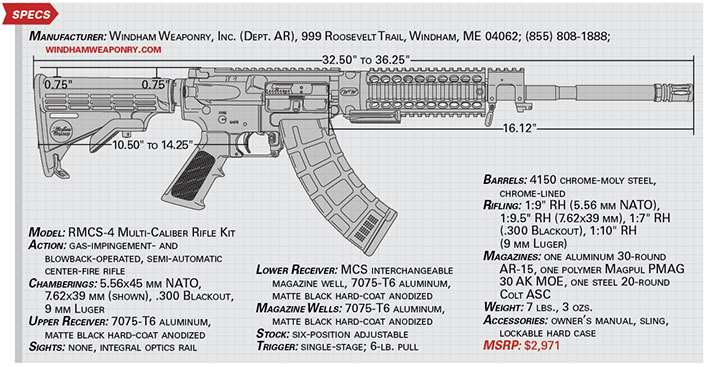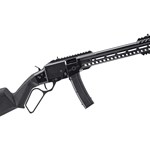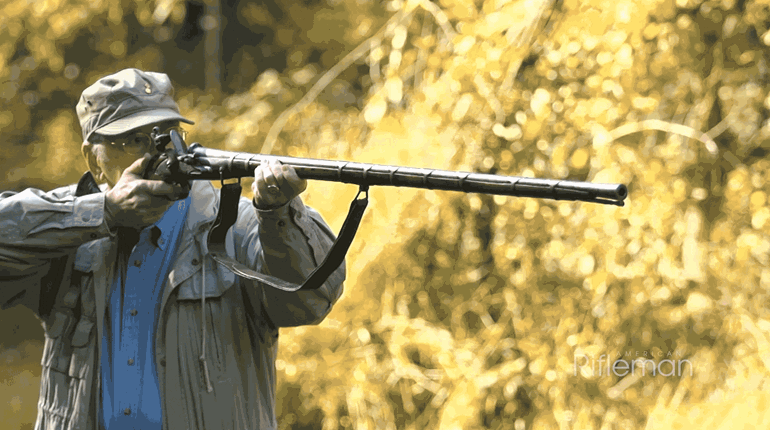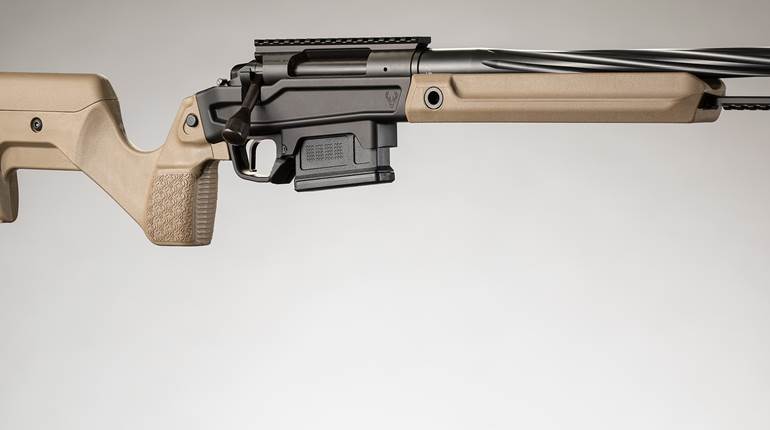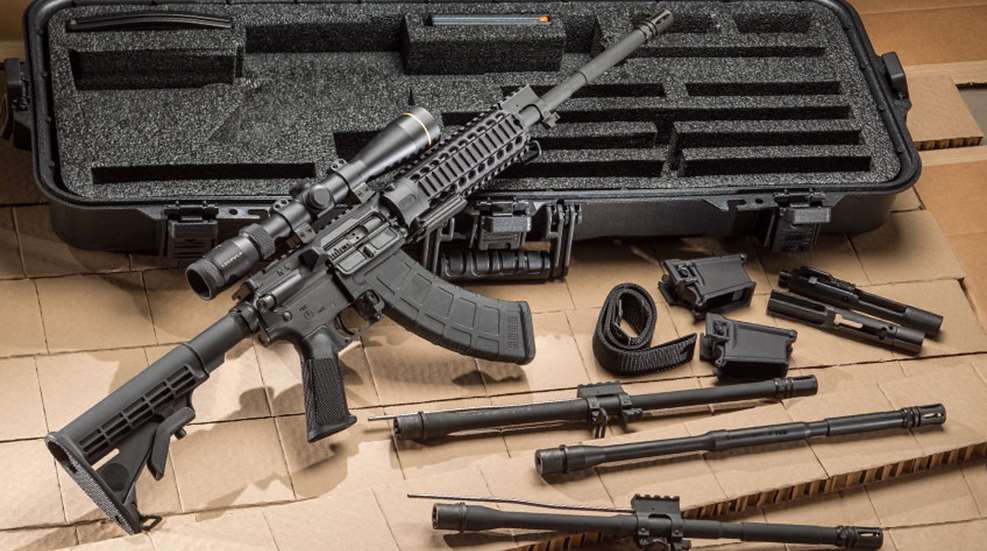
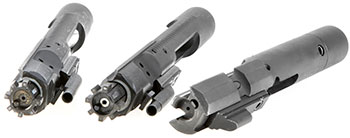 Windham Weaponry recently decided to take AR-15 modularity to the next level and to reduce the cost of converting a rifle to fire another cartridge with its Multi-Caliber System (MCS). Employing the company’s own in-house components, along with technology licensed from MGI, this semi-automatic carbine can be converted to fire several different chamberings using just one upper and lower receiver assembly due to interchangeable barrels, bolt carrier groups (BCGs) and magazine wells. This is a review of the RMCS-4 rifle kit, which includes all the components needed to fire the 5.56x45 mm NATO (.223 Rem.), 7.62x39 mm (shown), .300 Blackout and 9 mm Luger cartridges.
Windham Weaponry recently decided to take AR-15 modularity to the next level and to reduce the cost of converting a rifle to fire another cartridge with its Multi-Caliber System (MCS). Employing the company’s own in-house components, along with technology licensed from MGI, this semi-automatic carbine can be converted to fire several different chamberings using just one upper and lower receiver assembly due to interchangeable barrels, bolt carrier groups (BCGs) and magazine wells. This is a review of the RMCS-4 rifle kit, which includes all the components needed to fire the 5.56x45 mm NATO (.223 Rem.), 7.62x39 mm (shown), .300 Blackout and 9 mm Luger cartridges.
At first glance, the MCS looks very much like other gas-impingement-operated Windham AR-15s. The 16.12" chrome-lined barrel is fitted with a MIL-STD 1913 railed gas block, bayonet lug, sling swivel and removable A2 flash hider. The flat-top upper receiver and lower receiver are both CNC-machined from 7075-T6 aluminum forgings and hard-coat anodized in a matte black finish. The other controls and features are all typical of the AR design, including the six-positon buttstock, mil-spec charging handle, dustcover, forward assist, left-side safety lever, right-side magazine release, mil-spec trigger and polymer A2 pistol grip.
The two notable external differences of the MCS are found in the quad-rail handguard and the magazine well. Where the handguard meets the upper receiver there is a heavy aluminum ring with two swing-out handles locked in place by a sliding retention block and bail. This device allows the barrels to be removed from the upper receiver without removing the handguard. The magazine well separates from the lower receiver just in front of the trigger and is supported by a pair of rails that allow it to slide up and off the lower receiver.
The RMCS-4 includes one complete rifle, three additional barrels, two extra magazine wells, two additional BCGs and three magazines, including an aluminum 30-round Windham AR-15 type for 5.56 mm NATO and .300 Blackout ammunition, a polymer 30-round Magpul PMAG 30 AK MOE for 7.62x39 mm, and a stainless steel 20-round Colt AR rifle-type magazine for 9 mm Luger made by ASC. There’s also a sling and a chamber flag. All of the components are easily identified by their design and markings to avoid error during cartridge conversions. The kit arrives in a heavy-duty, water-resistant, lockable, Plano carry case. This case not only protects the system during transport, it also provides a customized interior for storing all of the various components.
The number of components traded out for a chambering conversion depends on the rifle’s current configuration. To switch from 5.56 mm NATO to .300 Blackout (or vice versa), only a barrel change is required, since these two cartridges use the same BCG and magazine. Converting from one of those two chamberings to either 7.62x39 mm or 9 mm Luger requires trading out the barrel, BCG and the magazine well.
The chambering conversion process is simple and can be completed in just a few minutes once the user reads the owner’s manual and familiarizes himself with the components. To convert the rifle from one cartridge to another, start by removing the magazine and verifying the rifle is completely unloaded. With the BCG in the forward position, separate the upper from the lower by depressing the takedown and pivot pins (as with any other AR carbine). Remove the BCG and charging handle from the upper receiver. Flip the upper over to gain access to the textured polymer retention block and bail. Press the bail up and off of the barrel retaining arms and then slide the tension block forward off of the retaining arms. Swing the two retaining arms outward until they are perpendicular to the barrel. This unlocks the barrel and gas tube so that they can be pulled free of the upper receiver.

Guide the replacement barrel into the upper receiver. Look through the upper receiver to ensure the barrel and gas tube are properly aligned and fully seated in place. Swing the retaining arms back into the 12-o’clock position, slide the retention block back over the arms and then lock the bail back in place. Replace the charging handle, along with the BCG, for the same chambering as the barrel. Lubricate as needed. The upper is now ready to use.
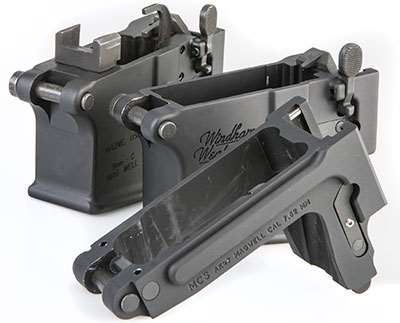
To trade out the lower receiver’s magazine well, start by depressing the spring-loaded retention pin located on the front, right side of the trigger guard (use a small punch or a 5.56 mm NATO bullet tip). Swing the trigger guard down and out of the magazine well. Depress the magazine release button to release the magazine well. While holding the magazine release down, slide the magazine well up and off the lower receiver. Align the replacement magazine well with the lower receiver. While depressing the magazine release button, slide the magazine well down onto the lower receiver. Swing the trigger guard up and back into place.
Set the complete upper assembly on top of the lower receiver and pin the two halves together. Run a quick check to make sure all the correct and necessary components are present and cycling smoothly. The barrel markings, BCG and magazine well can all be visually verified without dismantling the gun. If everything checks out, the rifle is now ready to fire.
At the shooting range, testing started with the rifle in its factory 5.56 mm NATO configuration and then progressed to the .300 Blackout, 7.62x39 mm and finally the 9 mm. Each cartridge conversion went smoothly without any hang-ups. All of the rifle’s controls functioned properly with the single-stage mil-spec trigger exhibiting a 6-lb. trigger pull. The MCS demonstrated an impressive level of reliability, operating without any ammunition- or magazine-related failures throughout the entire testing process with all four chambering conversions. A key reason for this level of reliability is the interchangeable magazine wells. They provide a precise magazine fit for dependable ammunition feeding.
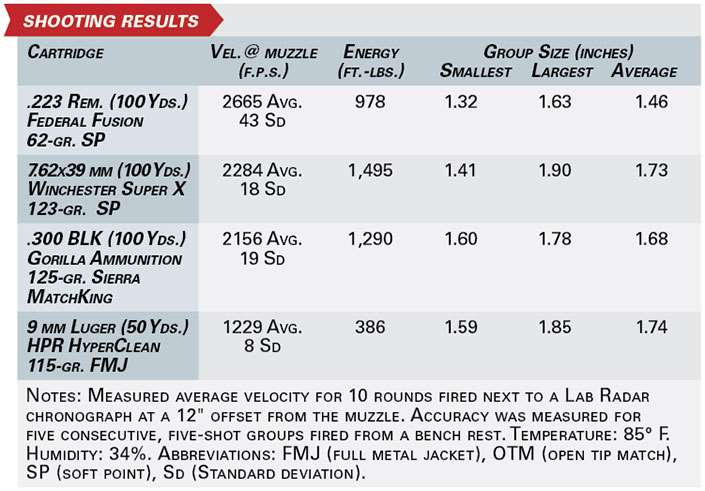
Changing the rifle’s chambering after sighting-in a scope does not affect the down-range point of impact as much as one might expect. With the 5.56 mm NATO barrel assembly installed, the MCS was fitted with a Leupold VX-R Patrol 3-9X 40 mm Firedot TMR optic and sighted-in at 100 yds. That barrel was then traded out for the .300 Blackout barrel. Without adjusting the scope, the .300 Blackout barrel shifted the point of impact 11" up and 3" to the right of the 5.56 mm NATO barrel. Although this was a significant change, it was still possible to re-zero the scope at 100 yds. without moving the target.
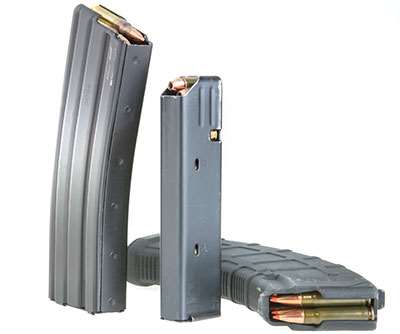
The rifle next underwent a complete cartridge conversion (barrel, BCG and magazine well) to fire 7.62x39 mm. With the scope still set to the .300 Blackout barrel’s zero, the 7.62x39 mm barrel exhibited a 5" drop without a notable level of horizontal shift. This smaller degree of shift in the point of impact is similar to what one expects when changing ammunition brand or bullet weight. Once again, a few shots at 100 yds., without moving the target forward or back, and the optic was zeroed once more. However, the scope’s zero did not transition when the rifle was converted to 9 mm. Shots fired using the 7.62x39 mm barrel’s scope settings did not strike the target at either 100 or even 50 yds. Thus, the target stand had to be wheeled back to the starting point and the rifle re-zeroed from scratch.
Windham Weaponry’s dedication to quality is clearly evident in this system. When fully assembled, the MCS components fit tightly together as if each cartridge option was the native chambering, and yet they remain easy to take apart even when the gun is hot and dirty.
All of the cartridge conversions of the Windham Weaponry RMCS-4 rifle kit proved to be easy to use and equally reliable when installed in the MCS AR-15 rifle.
Although substantial, the suggested retail price of $2,971 is likely still less than the cost of buying and accessorizing a quality AR-15 with three additional uppers, optics and the associated magazines. And for those not in the market for a four-chambering rifle, Windham Weaponry also offers the MCS in two-chambering and three-chambering kits.
